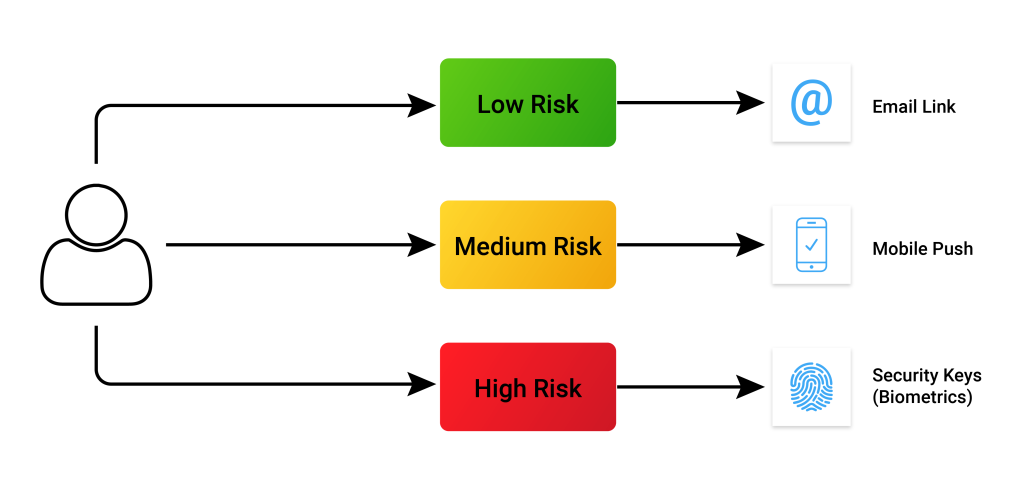Since access management is a key challenge for major entities which have numerous corporate applications as part of the enterprises, let me discuss how Adaptive Authentication plays a key role in handling the Access Management issues seamlessly.
A basic authentication with user id and password is enough to unlock the system when it is a standalone system, but when systems are connected to network which holds business critical data, the system needs multiple layers of security to ensure the systems are safe.
When Remote and Hybrid work culture is an opportunity for the Hackers to penetrate through the Networks, Multi-Factor Authentication (MFA) is the solution for securing the systems. MFA is reliable when there is limited number of users in the enterprise, with the increased utilization of cloud and Software as a Service type models, corporate enterprises need next level of authentication mechanisms to ensure Network Security.
As we need to accept the fact that CHANGE is continuous, lets discuss about Adaptive Authentication which is currently in trend.
What is Adaptive Authentication?
Adaptive Authentication is a type of dynamic Multi Factor Authentication (Risk based Authentication) which could be implemented in such a way that the Identity Service Provider (IDP) will select multiple different Authentication mechanisms and additional mechanisms to verify the user based on the user’s Risk Profile, behavior, organization’s Access Security Policies and the type of the target which user is trying to access.
How does Adaptive Authentication work?
Adaptive Authentication works in multiple ways based on the capabilities of the Identity Service Provider –
- Organization-wide static policies could be defined based on the risk levels of the user such as role, department, location, and work schedules
- Creating dynamic policies where the system will utilize it based on the complexity of the target and User Behavioural Analytics along with static policies
- Utilizing the location and IP of user to step up the Authentication factors if required based on the criticality


A typical Adaptive Authentications system should provide multiple verification mechanisms, it should support Multi Factor Authentications through –
- SMS / Text Verification
- Authentication App
- Email Verification
- Phone call verification to predefined, verified phone number
- OTP Tokens
- Push notifications in mobile devices
- Smart cards
- Face recognition & Biometrics

Difference between MFA and Adaptive Authentication
Multifactor Authentications is the popular at present. However, the Adaptive MFA or Adaptive Authentication or Risk Based Authentication is the Future of Authentications.
When compared to MFA, Adaptive MFA utilizes dynamic factors such as User Behavioural Analytics (UBEA), location, multiple types of authentications and other dynamic attributes of the users, devices or applications which requests the access to the target to improvise the security. This is a must to ensure the Network Security to remain competitive for global businesses.
Key Benefits
- Frictionless Authentication
- Defends cyber-attacks with add on layer of security scrutinizing
- Comprehensive security layer by analyzing the risk factors and consumer behavior
- Secure access to customers, partners, and employees regardless of their location
- Risk-based authentication triggers only in elevated-risk situations and helps avoid unnecessary long authentication processes
- Security adaptive multi-factor authentication for users requesting access to sensitive and critical applications and data
- Easy to deploy and maintain for the corporates
- Context-based authentication solves the BYOD (bring your own device) security challenges
Adaptive Authentication is a much-required technology to handle the modernized cyber-attacks.
About the Author –

Sundaramoorthy S
Sundar has more than 13 years of experience in IT, IT security, IDAM, PAM and MDM project and products. He is interested in developing innovative mobile applications which saves time and money. He is also a travel enthusiast.
Back to blogs
